Boat Anchor Selection Guide: Choose the Perfect Type & Size
When you buy a used boat, odds are it will come with an anchor, and with a new boat you'll usually get to choose an anchor for it. What if that old anchor you have on your new-to-you boat doesn't hold so well, or needs replacing? In any of those scenarios, you'll need to pick out a new anchor for your boat. There are more types of anchors that you dreamed of, and they're all different in how they perform in different anchoring conditions. And your anchor will need to be sized for your boat.
The type of anchor you choose depends on the predominant bottom types where you plan to sail, and what fits on your boat. Once you know the type, you get the perfect type and size of anchor from the length and weight of your boat using the manufacturers' recommendations.
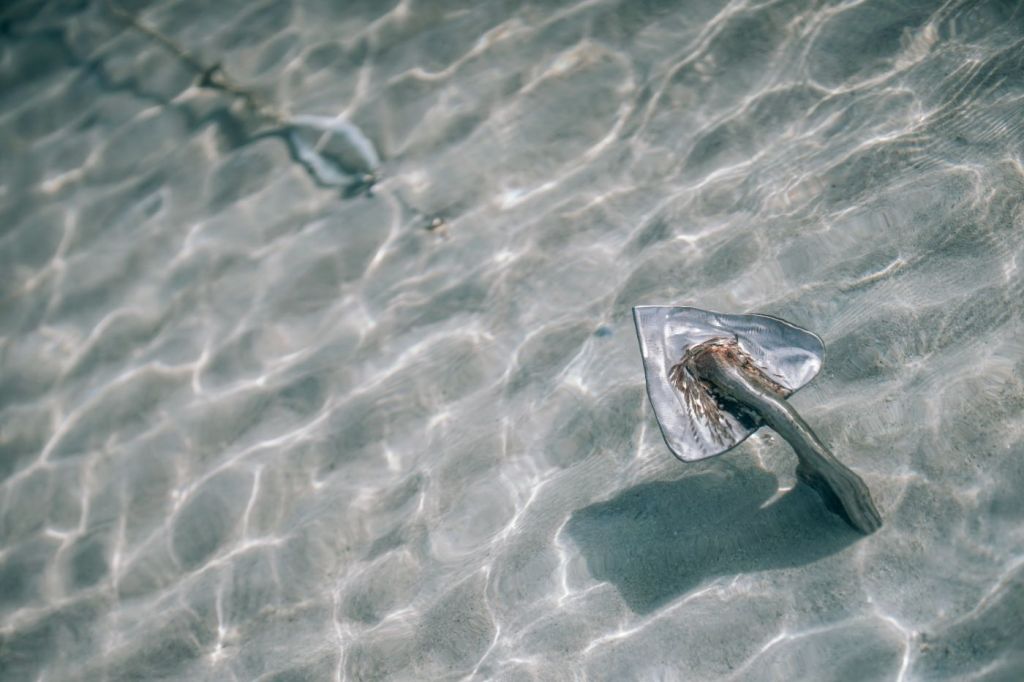
On this page:
Instead of getting overwhelmed, if you do a little research upfront on what you might need you can narrow down your choices and get the best anchor for your boat and where you use it.
How Does an Anchor Work?
While it may seem obvious at first glance, there are many mistaken assumptions about just how your anchor holds your boat to the bottom. It's important to understand just what your anchor does when it's holding your boat, so you know why you may choose one anchor or another.
All anchors dig into the bottom. Some have aggressive, plow-like forms or scoops which burrow in quickly, others have various hooks, spikes or protrusions designed to catch and hook as soon as the anchor is pulled.
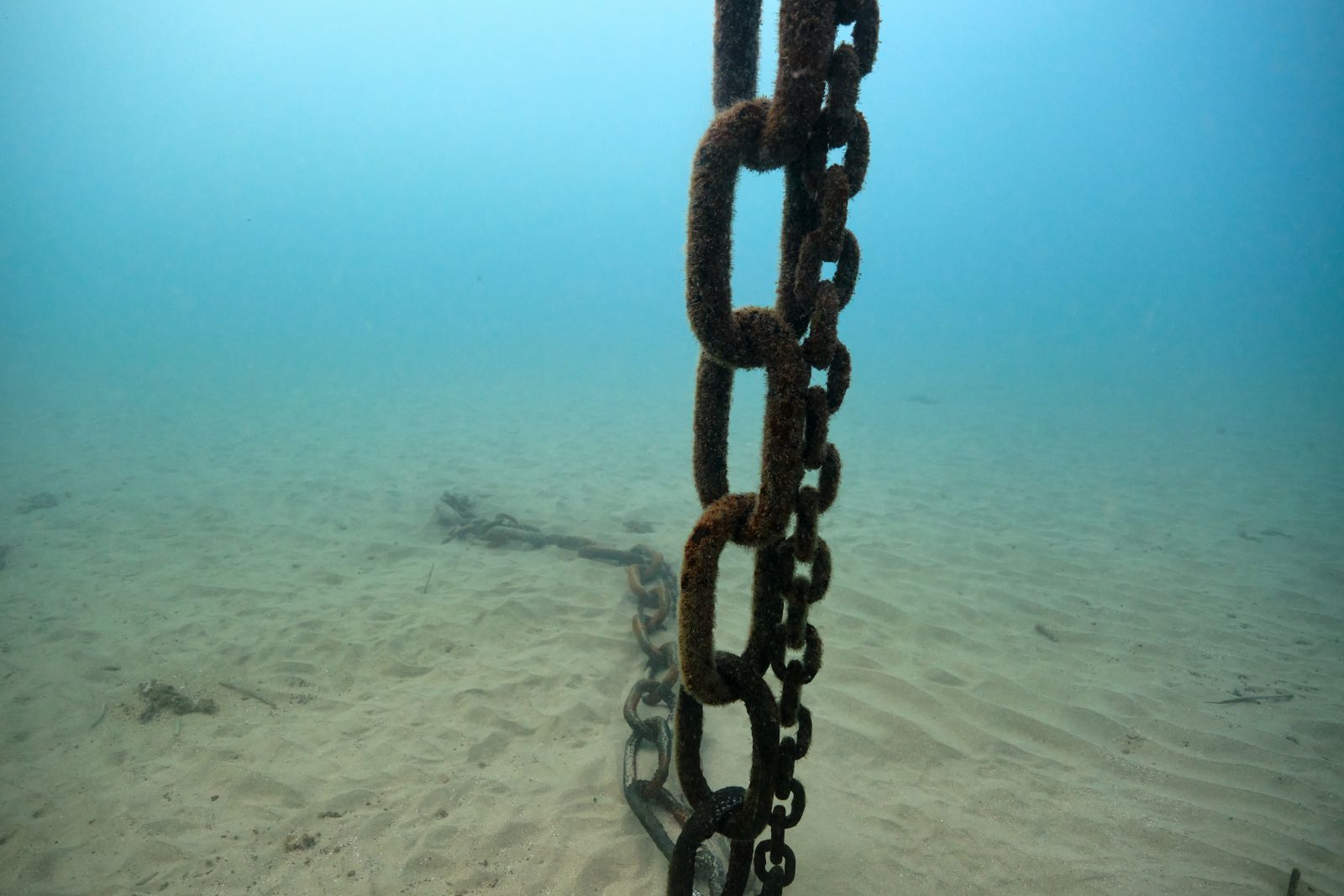
Angle of attack provides holding power
The pulling force on an anchor is along the shank, and for an anchor to offer maximum holding power, it's crucial that the bulk of the load from the boat's pull is applied in this direction. If the pull is from the side, the anchor may break out. If the pull is from above the anchor, it definitely will.
Part of the role of the chain in your rode is to keep the rode flat on the bottom to make sure the loads from the boat are horizontal and along the direction of the shank.
Scope & chain provide angle and drag
Your anchor rode and how much scope you let out is as important to your choice of anchor to how well you hold. Chain has its own resistance to being dragged and adds extra holding, and as noted above, it also keeps the forces on the anchor from pulling it out.
The longer the scope, the better the angle of pull on the anchor. With a length of chain, the extra weight adds more holding the bottom, and a rope/chain rode gives extra shock absorption in the catenary of the rode.
You can learn more about how to select and install the right anchor rode by reading our detailed article here.

Orientation of anchors
Most modern anchors have a definite top and bottom, and will not set lying on their backs. These anchors flip and orient their blades down if they land the wrong way or break out. Many anchor designs dig in quickly with the anchor lying on its side, and may have roll bars or weights to keep them in a suitable setting orientation.
Some anchors, like grapnel anchors or the Bulwagga, had a radial symmetry and no true up or down. These don't need to reorient or right themselves. They will catch the bottom no matter how they lie, though not all the blades and hooks will help hold the anchor.
Good anchors will reset unnoticably
All anchors can break out and may get rolled as a boat swings at anchor and wind strength increases. An anchor's ability to reset is important. You don't want to drag long before your anchor sets again. With a good anchor, you won't even be aware it has broken out and reset, as it will happen quickly without your boat seeming to drag at all.
Loads and Forces on an Anchor
An anchor doesn't care at all about what kind of boat is on the other end of the rode, what it cares about is how much drag force is on the rode. A heavy boat in a light breeze may pull as hard on an anchor as a lighter boat in more wind. It's the force that counts, and you size your anchor by how much force you can expect to land on that anchor and rode.
Boat weight partially determines drag force
Your boat's weight is one of the two sources of drag force on your anchor. Heavier boats will pull more than light boats in the same condition. Many anchor vendors give tables of boat weight ranges which match to the best anchor size.
In wind, boat length is more important
Picture two boats with the same weight - a low-slung classic yacht with little freeboard, but a heavy full keel, and a more modern design with higher freeboard, less ballast, and about ten more feet of length. In windless conditions, they'll pull about the same against the anchor.
But in twenty knots of breeze, the longer boat with more freeboard will have a lot more pull. Here, the boat's length overrides the weight. A doubling of wind speed quadruples the load on the anchor, so this effect becomes more pronounced the higher the wind.
Anchor Construction Materials
Anchors are made from three primary materials - galvanized steel, stainless steel, and aluminum.
Galvanized steel anchors are cheap
Galvanized anchors are the most common, as they are the least expensive, offer excellent weight, and are very durable and rugged. They can rust over time as the galvanization wears off, but provide the best cost to holding of all anchor construction material. You can re-galvanize an anchor at considerably less cost than replacing the anchor, if the original protection wears off.
Stainless steel anchors are expensive
Stainless steel anchors have similar strength to galvanized steel anchors combined with corrosion resistance. They look beautiful on the bow, but they are quite expensive at 3-5 times the cost of a similar galvanized anchor, and you'll want to pair them with a more expensive stainless chain. While they won't rust, they can get scratched and lose their shiny finish if you use them often. And there is a risk of crevice corrosion if stainless steel sits underwater too long.
Aluminum anchors don't rely on weight
Aluminum anchors are lightweight and strong, but may not have the holding power of heavier anchors of a similar size, and aluminum is not as strong as steel. They are popular with racers, and also for secondary anchors, because they are lighter and easier to handle. Aluminum anchors rely on bottom penetration to set, not weight.
Most Common Anchor Styles
The dozens of anchors available break down into a few general classes. Trying to organize all the choices by function helps you narrow the field to what may work best for you.

Claw anchor
Claw anchors, like the Bruce, have claw style blades to dig in and hold well for most conditions. They may struggle to dig in with a hard mud or clay bottom, but will reset well on other bottoms.

Plow anchor
Plow anchors are generally fixed, like the Delta, or have a hinge like the CQR. The fixed plows do well in everything but rocks, while the hinged CQR doesn't hold quite as well but responds better to the movement of the rode since there is a swivel.
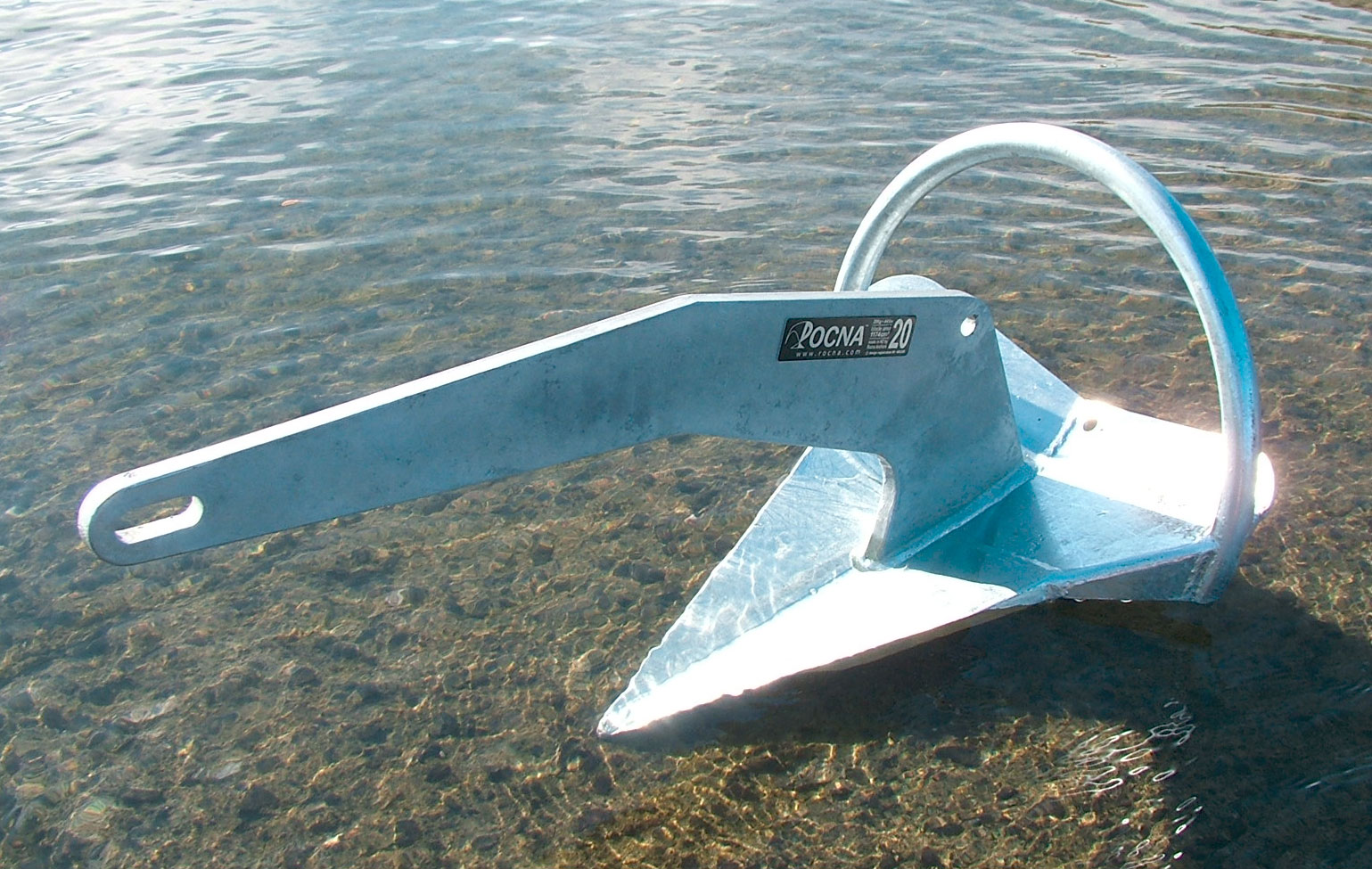
Plow with Roll Bars
Modern designs like the Rocna and Spade incorporate a plow form on the blades, coupled with a roll bar. These have fantastic holding power and set easily. They don't fit as well on some older boats, and are more expensive.
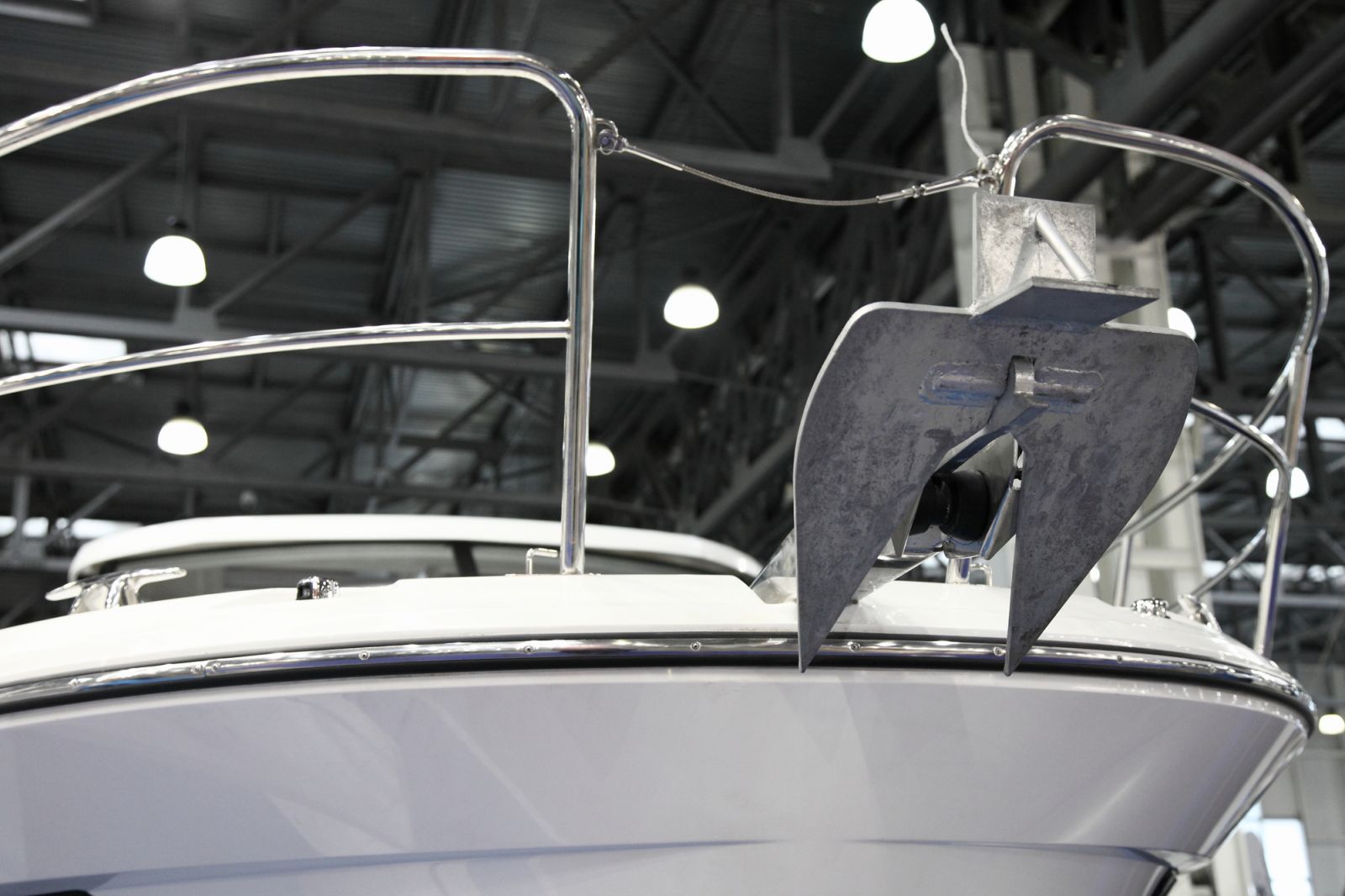
Fluke anchor
The fluke anchors are great in mud and sand, but don't do as well with bottoms they can't penetrate or grass. The Danforth (and its clones) are popular with smaller boats, and the lightweight aluminum Fortress is a favorite with weight conscious ravers.
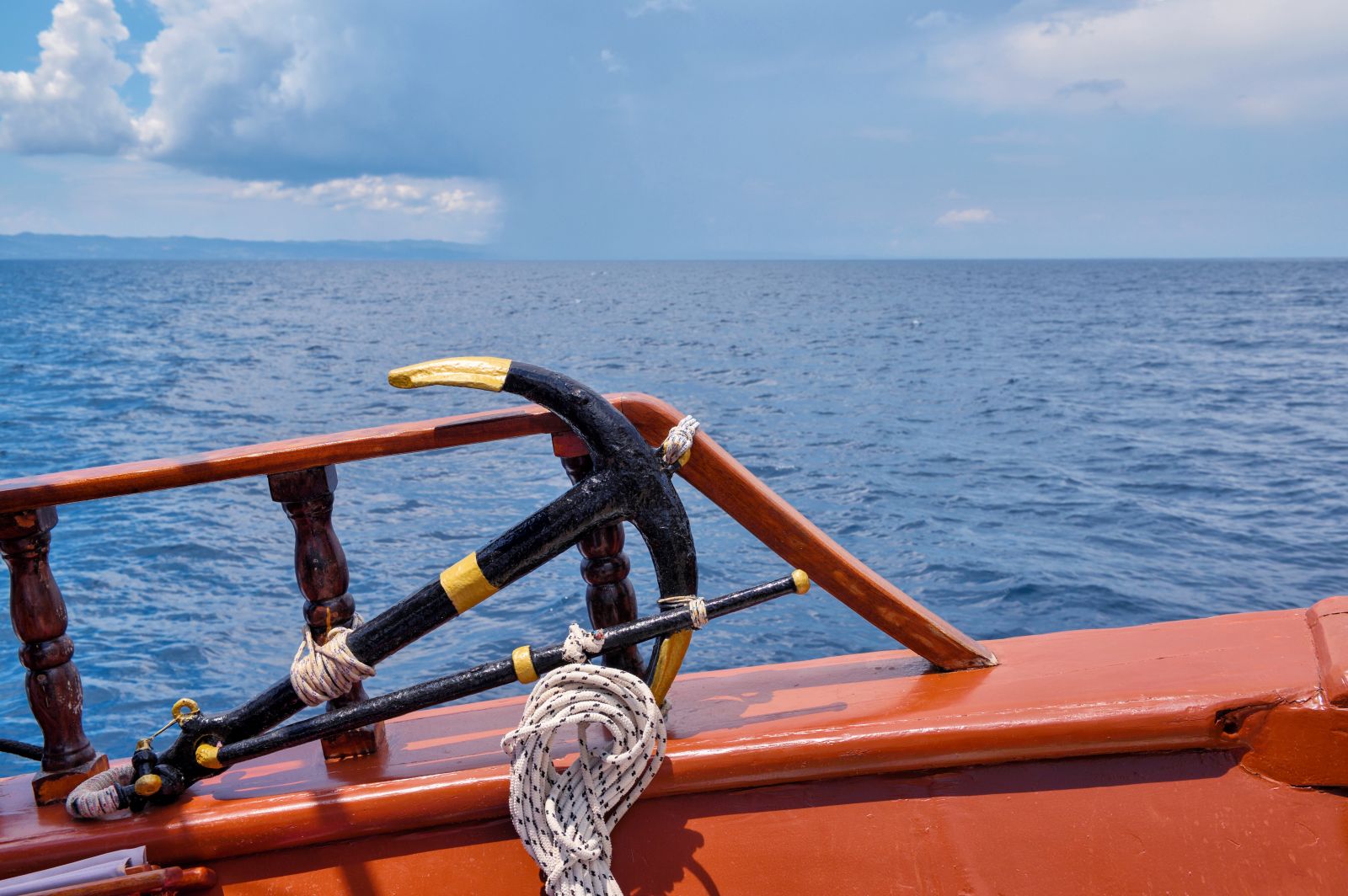
Fisherman's anchor
The traditional crossbar and hooks anchor is good for rocks. Some break down for storage, which makes them a popular choice for a storm anchor.
Grapnel anchor
Grapnels are fine anchors for dinghies, kayaks, PWCs and other small, light craft but don't do well with higher loads and larger boats.
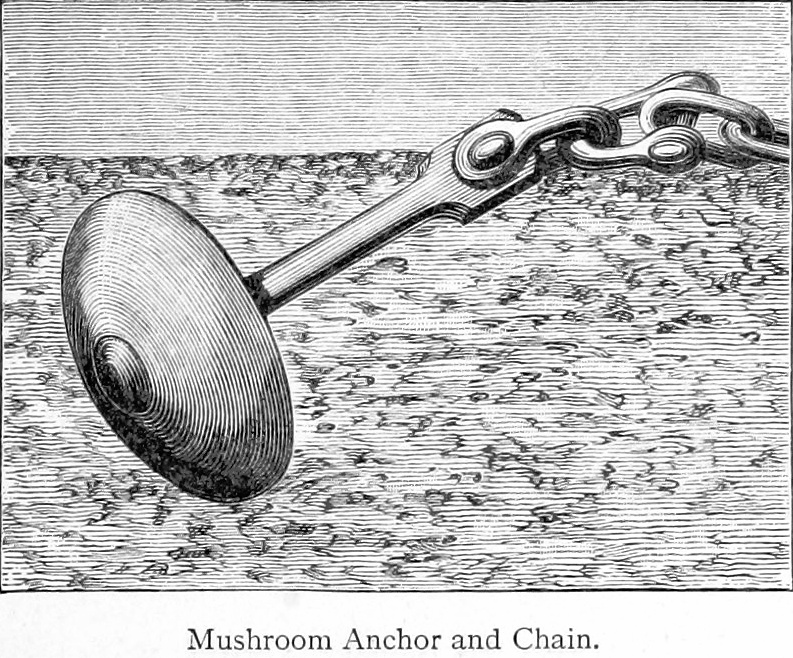
Mushroom anchor
Small mushroom anchors can hold a small craft like a dinghy or kayak. Many permanent moorings are large mushroom anchors, where they can dig deep into the bottom. But they are not suitable for big boat use.
Other alternatives
This list isn't exhaustive. There is constant innovation in anchor technology, from the Bulwagga to various box anchors, which don't even look much like anchors as we think of them. All have their strengths and weaknesses, so research carefully and try to find someone with real-world experiences with them.
Remember, there is no "right" or perfect anchor, so look at a lot of options to see what fits your boating style.
How Do I Choose an Anchor?
The basic decisions you have to make about your anchor are the style, size, and material of your anchor. While we can't get into every type of anchor on the market and how it works for every boat, we can give you an overview of the decisions you must make.
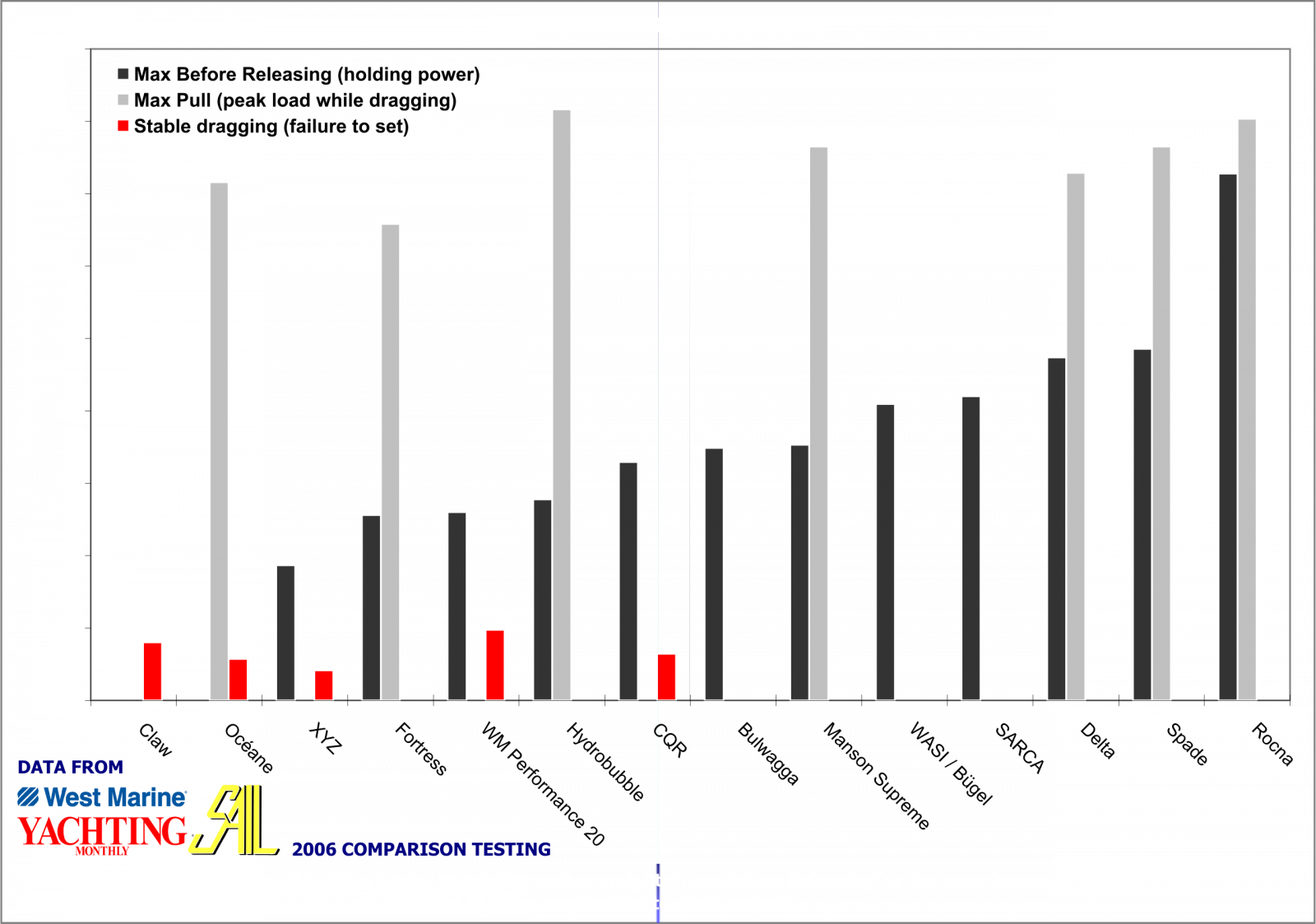
What fits on your boat?
If you're adding a new anchor to an existing boat, you may have some natural limitations on what anchors you may choose.
With a bow roller sized for a plow or a nice Danforth bracket installed already, maybe those features limit your choices. You may switch between a CQR and a Delta with that anchor roller, but there's a good chance you can't fit a Rocna's roll bar up there without bending something. You could probably switch a Fortress out for a Danforth in that bracket, but you can not hang a plow from it.
Most anchor manufacturers give dimensional drawings of their products on their websites, so measure and even mock up something to see if it will go. On my boat, I shoved a Manson Supreme where a CQR went, but not without permanently bending a retaining pin. And I mocked the whole thing up in cardboard ahead of time to be sure.
Where will you anchor?
The range of where boat affects what to have in your bow locker. If you're a Chesapeake Bay sailor and you don't leave the bay, something that holds well in mud is a must and may be all you need. But a world cruiser needs something more effective across a range of bottom types.
Give careful thought to the places you’ll want to spend the night on your boat, especially the bottom types you'll find. In the end, you'll likely have more than one anchor, and you want to cover most of the holding types you'll encounter.
Choose your materials based on budget and style
This is a matter of budget and style, mostly. As a cruiser who spends almost every night at anchor, I can't see the sense of spending a fortune on a pretty anchor that spends most of its life hidden. But for some, adding that high gloss show to the bow of a Bristol condition yacht everyone can see most of the time, the aesthetic choice may make more sense.
When I raced, I had a Fortress because it met the requirements to have an anchor, but I ended up spending a couple of nights on it. It was easy to move around, but for vacations I still dragged the 35 lb. CQR out of the shed and put it in the bow locker.
Size your anchor based on boat length and weight
Sizing your anchor is most people's biggest worry. Remember, it's better to have too much anchor instead of not enough. You want to sleep soundly and leave your boat without worrying. If you're hauling your anchor up without a windlass, the extra pounds matter a lot more, but it's better to have extra.
It's not as hard as you think to size your anchor, because every single manufacturer publishes a guide to how to select the right product for your boat. Most of them have tables for boat length and boat weight, and we talked up above about how a boat's weight and windage affect anchor loads.
To size your anchor, follow these steps.
- Search the "by length" table for the length of your boat, and note the recommended size.
- Search for the weight of your boat, and note the recommended size.
- The correct anchor size for your boat is the larger of those two recommendations.
If they give a single number in the table, choose the next number above yours. If they use ranges and your boat is on the edge of a weight or length range, there's no harm in moving to the next size band. Don't move down bands; you don't want to undersize.
For an example, look at this sizing table for Spade Anchors. We've going to pick an anchor for a boat which is 53' long and weighs about 54,000 lbs.
| Boat Length | Boat Weight | Anchor Model | Galvanized & Stainless Weight | Aluminum Weight |
|---|---|---|---|---|
| 21 ft. | <2,200 lbs. | 40 | 12 lbs. | 6 lbs. |
| 24 ft. | <4,850 lbs. | 60 | 21 lbs. | 10 lbs. |
| 34 ft. | <9,920 lbs. | 80 | N/A | 15 lbs. |
| 41 ft. | <14,330 lbs. | 80 | 33 lbs. | N/A |
| 52 ft. | <26,450 lbs. | 100 | 44 lbs. | 26 lbs. |
| 59 ft. | <35,270 lbs. | 120 | 55 lbs. | N/A |
| 65 ft. | <44,000 lbs. | 140 | 66 lbs. | 41 lbs. |
| 75 ft. | <50,700 lbs. | 160 | 77 lbs. | N/A |
| 75 ft. | <57,300 lbs. | 180 | 99 lbs. | N/A |
| 82 ft. | <66,130 lbs. | 200 | 121 lbs. | 57 lbs. |
| 98 ft. | <88,100 lbs. | 240 | 165 lbs. | N/A |
Source: Anchor sizing chart on Spade Anchor USA
You'll see a boat length of 53' puts us at 59ft. and a 55 pound galvanized anchor. But by vessel weight, for 54,000 lbs., the recommended weight is 99 pounds.
So the larger of the two is 99 lbs., so that is the proper weight for this boat.
What's in Your Anchor Locker?
Most boats should have more than one anchor, so you will go through this process several times. You may need multiple anchors for the different bottom conditions you may come across. If you foul an anchor or lose one, a spare anchor and rode can literally be a lifesaver.
Other reasons for multiple anchors include a lighter anchor for a "lunch hook," though with an electric windlass this isn't much of a concern on bigger boats. You may want a smaller stern anchor in case you need to anchor where you don't want to swing, or it's important to keep your bow facing a direction other than into the wind. And finally, if you plan to cruise far from your home port, you may want a storm anchor.
Any of the anchor types we've discussed will fill many of the above roles, and you can use these tools to evaluate your boat and your plans to make the best choice for each job.
Picking the Right Anchor Ground Tackle
The next step is to select the right ground tackle. Ground tackle consists of everything that connects the anchor to your boat and is used to control the angle of attack, scope, and drag by adding or removing weight to the anchor.
I've written a detailed guide to help you to understand ground tackle in depth, which will help you select the perfect parts yourself.
Did you find the answer to your specific question?
👍 1 👎 5
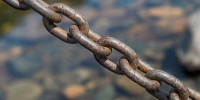
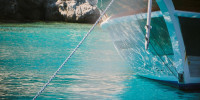
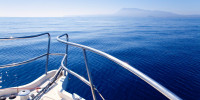
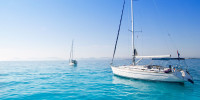
Leave a comment